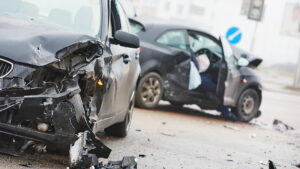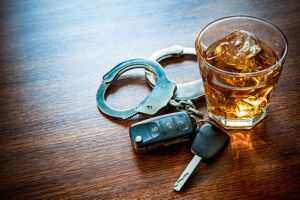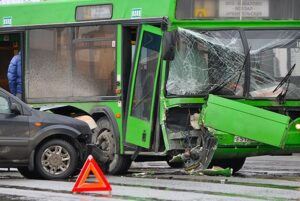
Across California, alcohol-impaired driving continues to take an enormous toll on communities. In 2023 alone, 1,355 people lost their lives in alcohol-involved crashes, a 4.5% drop from the previous year, yet still nearly 55% higher than in 2014.
Behind those numbers are families coping with grief, survivors facing painful recoveries, and victims struggling to rebuild their lives.
When investigations reveal that a driver had been drinking at a bar or restaurant before the crash, many victims wonder if that business shares part of the blame. Could the bar have done more to prevent the tragedy? California law takes a stricter view of these situations than most states, limiting when establishments can be held liable.
In this article, we’ll explain when a bar in Glendale can legally be sued after a drunk driving accident, and what steps victims can take to pursue accountability and financial recovery.
California makes it very difficult to sue bars for drunk driving accidents. The state dramatically limits what’s called “dram shop liability” compared to most other states. In the majority of cases, bars and restaurants cannot be held responsible for the actions of customers after they leave the premises.
California Civil Code Section 1714 establishes the general rule: the person who chooses to drink alcohol is legally responsible for their actions, not the establishment that served them. This means that even if a bar served someone many drinks and that person drove drunk and caused a crash, the bar typically cannot be sued.
However, California law does create specific exceptions where bars can face liability. These exceptions are narrow and apply only in particular circumstances involving minors.
Understanding these exceptions is crucial for victims trying to identify all potential sources of compensation.
A “dram shop law“ is a legal rule that holds alcohol-serving establishments liable for injuries caused by customers they overserved. The term “dram shop” comes from 18th-century England, where gin was sold by the spoonful in units called “drams.” These laws exist to encourage responsible alcohol service and provide victims with additional sources of compensation beyond the drunk driver.
Many states have broad dram shop laws that allow injury victims to sue bars whenever staff overserve obviously intoxicated patrons. California once had broader liability rules but dramatically narrowed them. The state’s current approach prioritizes protecting businesses over expanding victim compensation.
California’s limited dram shop framework means establishments face liability only in specific situations involving underage drinking. Commercial alcohol sellers receive strong legal protections that make most lawsuits against them unsuccessful.
This approach reflects California’s legislative choice to place responsibility primarily on the person who consumed alcohol rather than those who served it.
California law creates two narrow circumstances where bars may share responsibility for drunk driving accidents.
The first exception applies when a bar serves alcohol to someone under 21 years old, and that minor later causes injuries to another person. Selling or providing alcohol to anyone under the legal drinking age is illegal. When bars violate this law and the underage drinker harms someone, the establishment can be held liable for resulting damages.
The second exception requires two elements: the patron must be both obviously intoxicated and under 21. If a bar continues serving an underage person who is clearly drunk, and that person causes harm after leaving, the bar may face liability. This exception recognizes that serving someone who is both underage and visibly impaired demonstrates particularly reckless disregard for public safety.
“Obviously intoxicated” has a specific meaning in these cases. Signs that someone is clearly drunk include:
Bar staff are trained to recognize these signs. When they continue serving someone displaying obvious intoxication, especially a minor, they may create liability for their employer.
California also limits liability for people who serve alcohol at private gatherings. Social hosts generally cannot be sued for injuries caused by adult guests who drink at their homes and later cause accidents.
The exception mirrors the bar liability rule: social hosts can be held responsible if they provide alcohol to minors who then cause harm. This applies whether the host directly serves the underage person or simply allows them access to alcohol at their property.
The distinction between commercial establishments and private gatherings matters for legal purposes, but the underlying principle remains the same. Adults who provide alcohol to people under 21 assume risk of liability if those minors injure someone after drinking.
For example, a homeowner who throws a graduation party and allows high school students to drink beer could be held liable if one of those students drives home drunk and causes a crash. The homeowner’s decision to knowingly permit underage drinking creates legal responsibility for foreseeable consequences.
Building a case against a bar requires substantial evidence showing both that the patron was underage and that the establishment served them alcohol. This evidence often needs to be gathered quickly before it disappears.
Critical evidence includes:
Surveillance footage is often the most powerful evidence, but bars typically delete video recordings after 30 to 90 days. Acting quickly to preserve this evidence is essential. Attorneys can send preservation letters demanding that establishments save footage and other records.
Subpoenas may be necessary to access internal bar records, employee schedules, training materials, and prior complaints about underage service. Credit card companies can provide transaction records showing purchases made at specific times. Simply put: building a complete picture requires thorough investigation.
California follows a pure comparative negligence rule. This means multiple parties can share responsibility for an accident, and each pays damages according to their percentage of fault.
In drunk driving cases involving bar liability, fault might be distributed among several parties. The drunk driver bears primary responsibility for choosing to drive while impaired. If the bar illegally served an underage or obviously intoxicated minor, it might share a portion of fault. Other potentially liable parties could include event organizers who allowed underage drinking or adults who provided alcohol.
A jury determines each party’s fault percentage after hearing all evidence. If total damages equal $500,000 and the jury assigns the drunk driver 80% fault and the bar 20% fault, the bar would owe $100,000. The victim can collect from any responsible party up to that party’s percentage.
This system allows victims to pursue compensation from multiple sources. Even if the drunk driver lacks insurance or assets, a bar found partially liable can be required to pay its share of damages. This provides victims additional options for recovery beyond the driver alone.
Most California drunk driving cases do not involve bar liability because the exceptions are so narrow. However, victims still have several paths to compensation even when establishments cannot be sued.
The drunk driver’s auto insurance provides the primary source of recovery. California requires drivers to carry minimum liability coverage. Victims file claims against this policy for medical bills, lost wages, property damage, and pain and suffering. If damages exceed policy limits, victims can pursue the driver’s personal assets.
Uninsured and underinsured motorist coverage on the victim’s own auto policy provides backup protection. This coverage applies when the at-fault driver has no insurance or insufficient coverage to pay for all damages. Many California drivers carry UM/UIM coverage without realizing it.
Other potential sources include:
Pursuing these alternative sources often proves more successful than trying to establish bar liability under California’s restrictive laws.
California’s statute of limitations gives injured victims two years from the accident date to file a lawsuit. For wrongful death cases, families have two years from the date of death. Missing these deadlines typically prevents you from recovering any compensation regardless of how strong your case.
Cases involving potential bar liability require particularly quick action. Surveillance footage gets deleted, employees change jobs and become difficult to locate, and memories fade. Evidence that exists immediately after an accident may be gone within months.
If you believe a bar served an underage or obviously intoxicated minor before your crash, contact an attorney immediately. Early investigation preserves critical evidence and protects your legal rights. Even if you’re still receiving medical treatment and haven’t fully recovered, starting the legal process early is important.
Attorneys who handle drunk driving cases conduct thorough investigations to identify all sources of potential compensation. This process involves multiple steps that require legal expertise and resources.
Investigation tasks include:
Lawyers evaluate whether California’s narrow bar liability exceptions might apply to your case. This requires analyzing the drunk driver’s age, their visible level of intoxication, where they drank before the crash, and whether bar staff served them illegally.
Even when bar liability doesn’t apply, attorneys identify other compensation sources, including insurance policies, vehicle owners, employers, and social hosts. They handle claim submissions, negotiate settlements, and file lawsuits before deadlines expire. Legal representation levels the playing field against insurance companies that try to minimize payouts.
Drunk driving crashes cause catastrophic harm that extends far beyond the immediate physical injuries. Victims face lengthy recoveries, mounting bills, and emotional trauma that affects every aspect of life. Families who lose loved ones to drunk drivers endure grief no settlement can truly address.
California’s limited dram shop laws make it difficult to hold bars accountable in most cases, but exceptions exist. Even when establishments cannot be sued, multiple other paths to compensation remain available. Identifying all potential sources of recovery requires thorough investigation and legal knowledge.
Thompson Law has helped many Glendale drunk driving accident victims pursue justice and compensation. We investigate whether bars illegally served underage or obviously intoxicated minors. We track down surveillance footage, interview witnesses, and subpoena records before evidence disappears. When bar liability doesn’t apply, we identify other defendants and insurance coverage to maximize your recovery.
You deserve compensation for your injuries and losses. The responsible parties should be held accountable. We handle the legal process while you focus on healing.
Contact Thompson Law today for a FREE CONSULTATION about your Glendale drunk driving accident case.






Thompson Law charges NO FEE unless we obtain a settlement for your case. We’ve put over $1.9 billion in cash settlements in our clients’ pockets. Contact us today for a free, no-obligation consultation to discuss your accident, get your questions answered, and understand your legal options.
State law limits the time you have to file a claim after an injury accident, so call today.